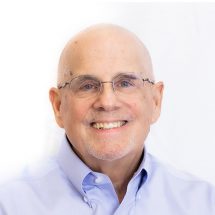How Social Determinants Affect Our Health
Social determinants of health are the conditions in the environments where we are born, live, play and work. Our age is also a factor and all of these things affect a wide range of health, quality of life outcomes, and have a major impact on our health.
Each year, 3.6 million people in the United States do not obtain medical care for multiple reasons. Some don’t have access to grocery stores with healthy food options so they don’t have good nutritional items available. While others don’t have transportation to get them to and from medical appointments. These two factors can raise their health risks and lowers their life-expectancy compared to people who do have access to these things.
Inequalities arise because of the circumstances in which people live and the systems put in place to deal with health issues. The World Health Organization says, “Unequal distribution of health-damaging experiences is not in any sense a ‘natural’ phenomenon but is the result of a toxic combination of poor social policies and unfair economic arrangements, (where the already well-off and healthy become even richer and the poor who are already more likely to be ill become even poorer).
Studies show individuals who are consistently deprived whether wealth, influence, or power, are at a significant disadvantage for health equities and face a lower health outcome than those who are able to access resources.
So, what happens when someone in our community has a life-threatening illness but has no means to receive the proper healthcare?
Maintenance of good health through the utilization of proper healthcare resources can be quite costly and therefore unaffordable to certain populations. Research has shown that the quality of health care varies among different socioeconomic groups. Transportation barriers can result in missed or delayed health care appointments, increased health expenditures, and overall poorer health outcomes. Having transportation readily available, can also be a vehicle for wellness and increased efficiency for healthcare providers.
In order to resolve it, we have to go to the root cause. Should the responsibility fall on the healthcare system and the provider offering the service? Or should this fall under government policy and CMS reimbursement for NEMT. That is the age-old question.
According to an article in health affairs, early evidence suggests having the health care organizations as the hub could help manage health and these organizations may be motivated to take on the role given the financial risk for outcomes in accountable care and the need to collaborate to achieve improved outcomes in social determinants. Health care organizations that assume the role of a hub generally assume more responsibility for social determinants than do those that see themselves as spoke, although all are likely to have some role in this work.
Whatever the case, it is up to us, as a society, to help change the current model and put processes in place so there are no barriers to healthcare access.
Recent Articles
- Dialysis Treatment and Transportation August 8, 2023
- Importance of Transportation for Hospital Systems April 17, 2023
- Background of PACE; why transportation is vital for PACE programs April 3, 2023
- Cancer Survivor Gives Back March 30, 2023















![Rachel Kern[8115] Rachel Kern[8115]](https://www.sendaride.com/wp-content/uploads/2019/06/Rachel-Kern8115-214x214.png)


























